Peter Dreher:Tag Um Tag Guter Tag
2007-2009
Oil on linen
Four panels of 9 3/4 x 7 3/4 inches each
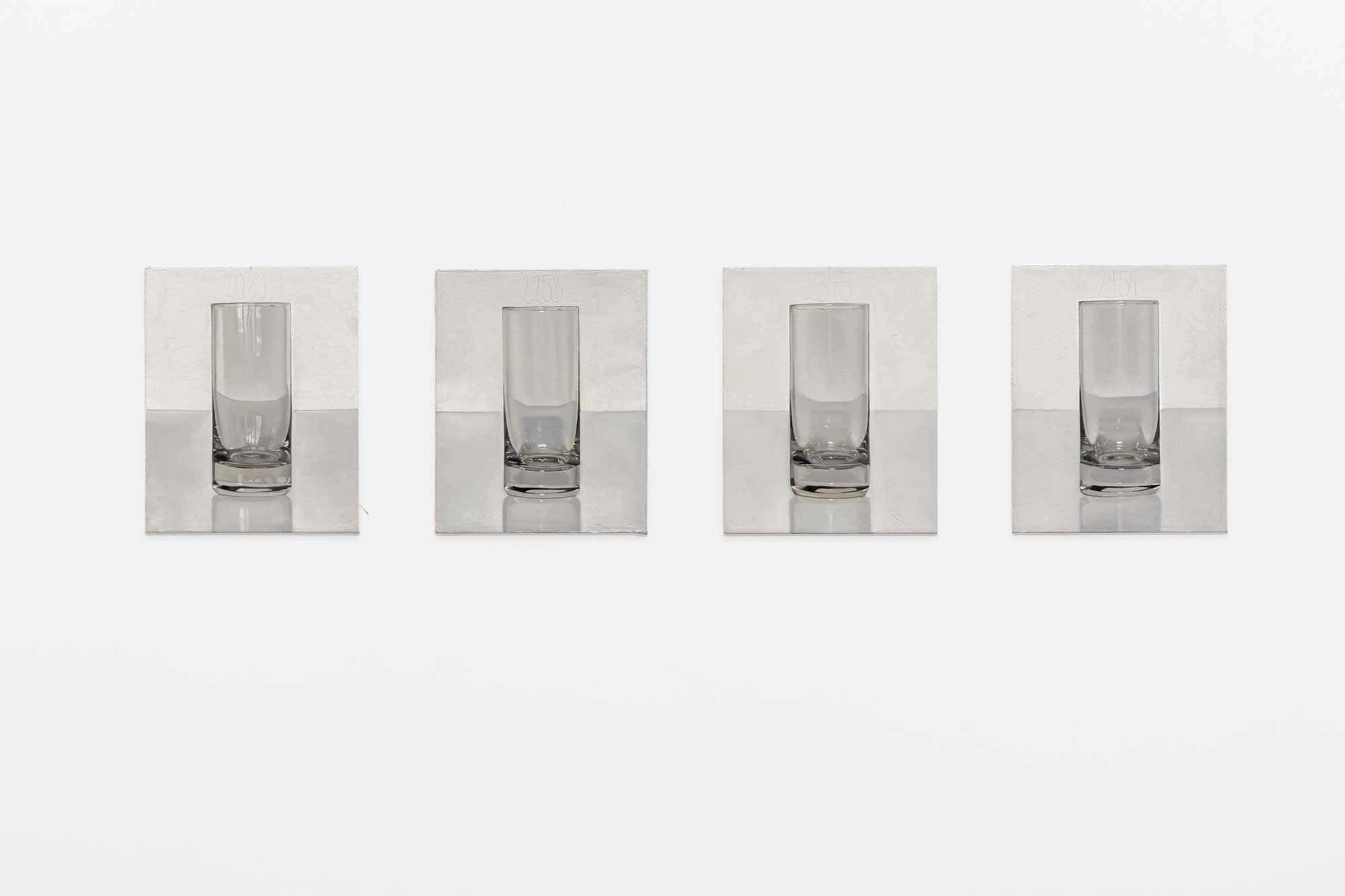
“What is important to me is not inventing a picture but experiencing the infinite possibilities available in the creation of the image.”
Peter Dreher
German artist Peter Dreher (1932-2020) is best known for his depictions of a single water glass, which he painted over 5000 times across a 40 year period. Dreher worked with intense consistency: each painting is on a 10 x 8 inch canvas, framed centrally within the composition and rendered in a uniform palette of grey and brown oils; the glass is the same distance away from Dreher, placed on the same worktop and against the same background. The artist then scratched the number of the work within the series into the painted surface above the glass.
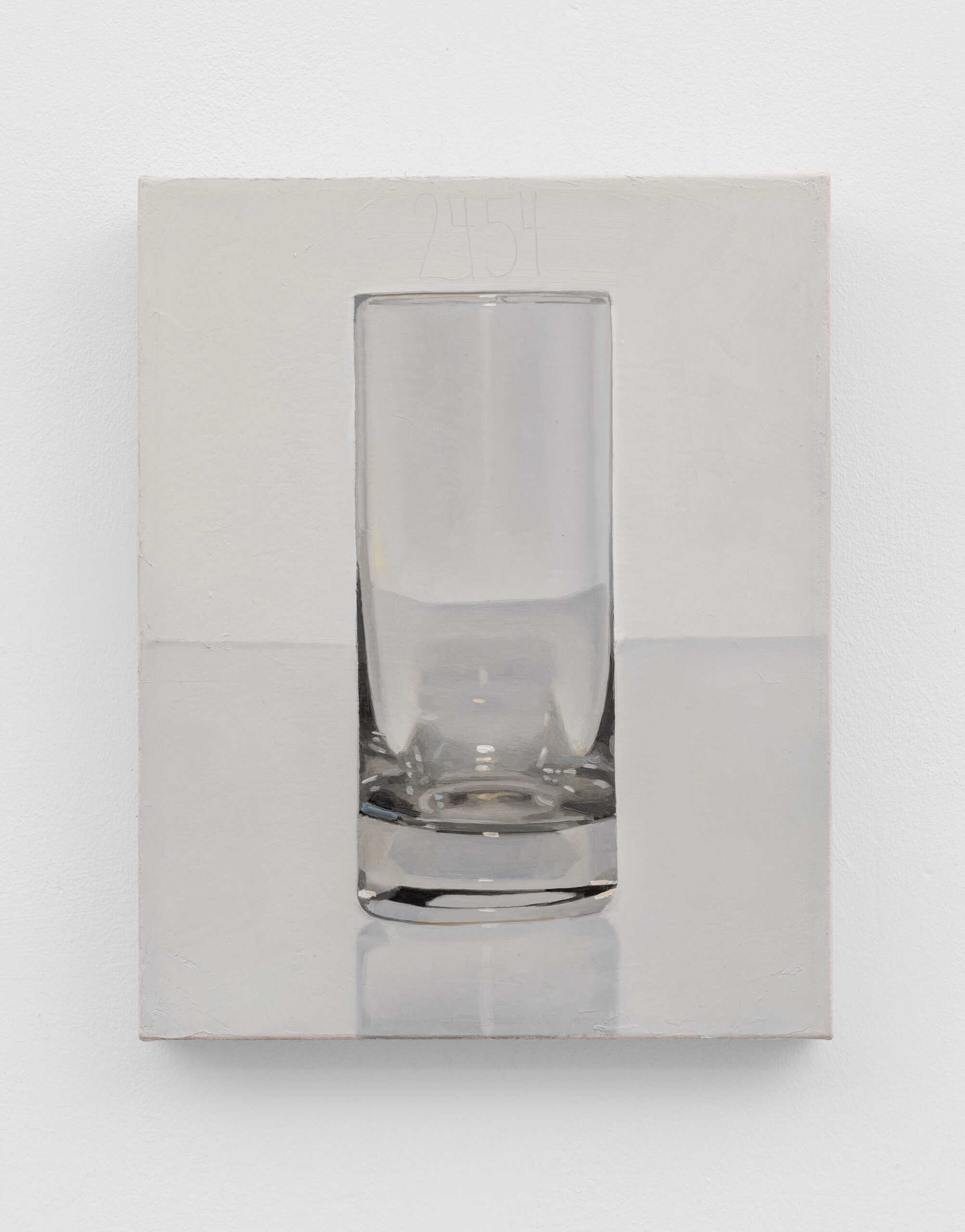
Peter Dreher. Tag Um Tag Guter Tag (Nr 2454)
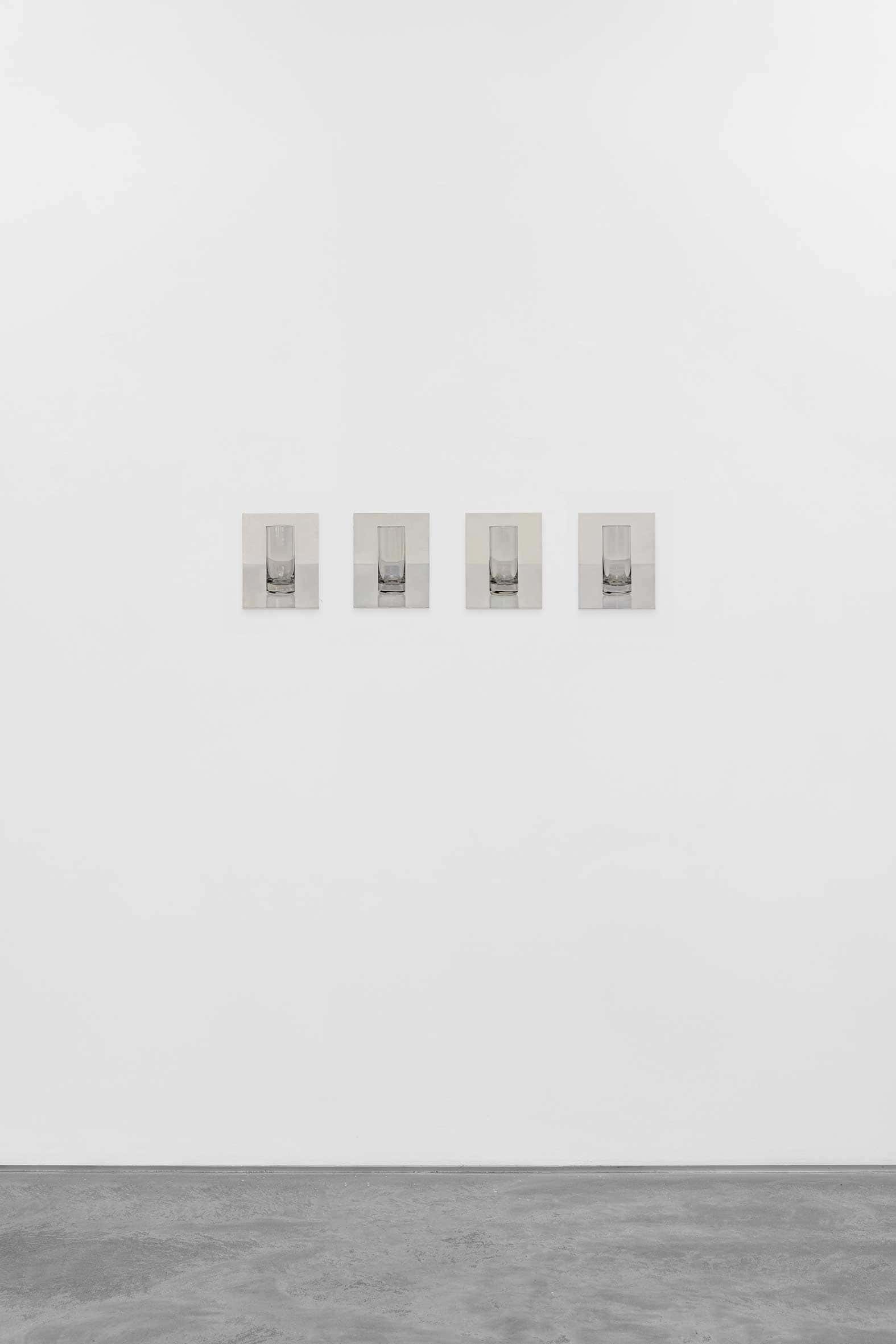
Installation View:. Tag Um Tag Guter Tag (Day by Day Good Day) Nr. 2060; Nr. 2253; Nr. 2345; Nr. 2454, 2007-2009
Dreher’s series is characterised by a tension between uniformity and variation. The transparent glass functions as a lens through which to view the changing atmospheric conditions of the studio, concentrating the details of waxing or waning light. Each painting is defined by minute differences in light, shadow, colour, reflection; subtle details that are amplified as the series tends towards homogeneity. Dreher’s paintings in Tag Um Tag Guter Tag recall Giorgio Morandi’s still life etchings, similarly iterative in their process yet innately individual in their tonal gradations.
The title – Day by Day, Good Day, in English – is taken from a Zen-Buddhist saying that suggests everything is of equal importance. For Dreher, repetition was not a limitation but represents a philosophical impulse and a means of liberation. His unique approach to realism found definition in opposition to the style of painting enforced during Dreher’s childhood in Nazi Germany, but also represented a resistance to the tendency towards abstraction dominating painting in the 1960s. Through focusing on a single object, Dreher was able to concentrate on the process of painting itself; “What is important to me is not inventing a picture but experiencing the infinite possibilities available in the creation of the image.”
More Info
EnquireIn context
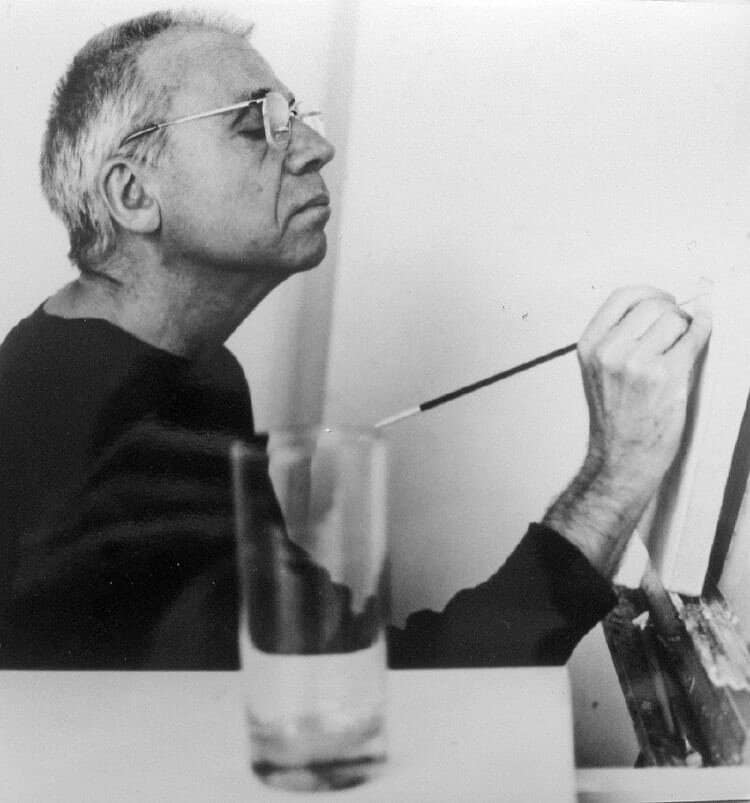
As well as a painter, Dreher was an academic, and became professor at the State Academy of Fine Arts Karlsruhe in 1968. Numbered among his pupils was Anselm Kiefer, to whom Dreher was a great inspiration.
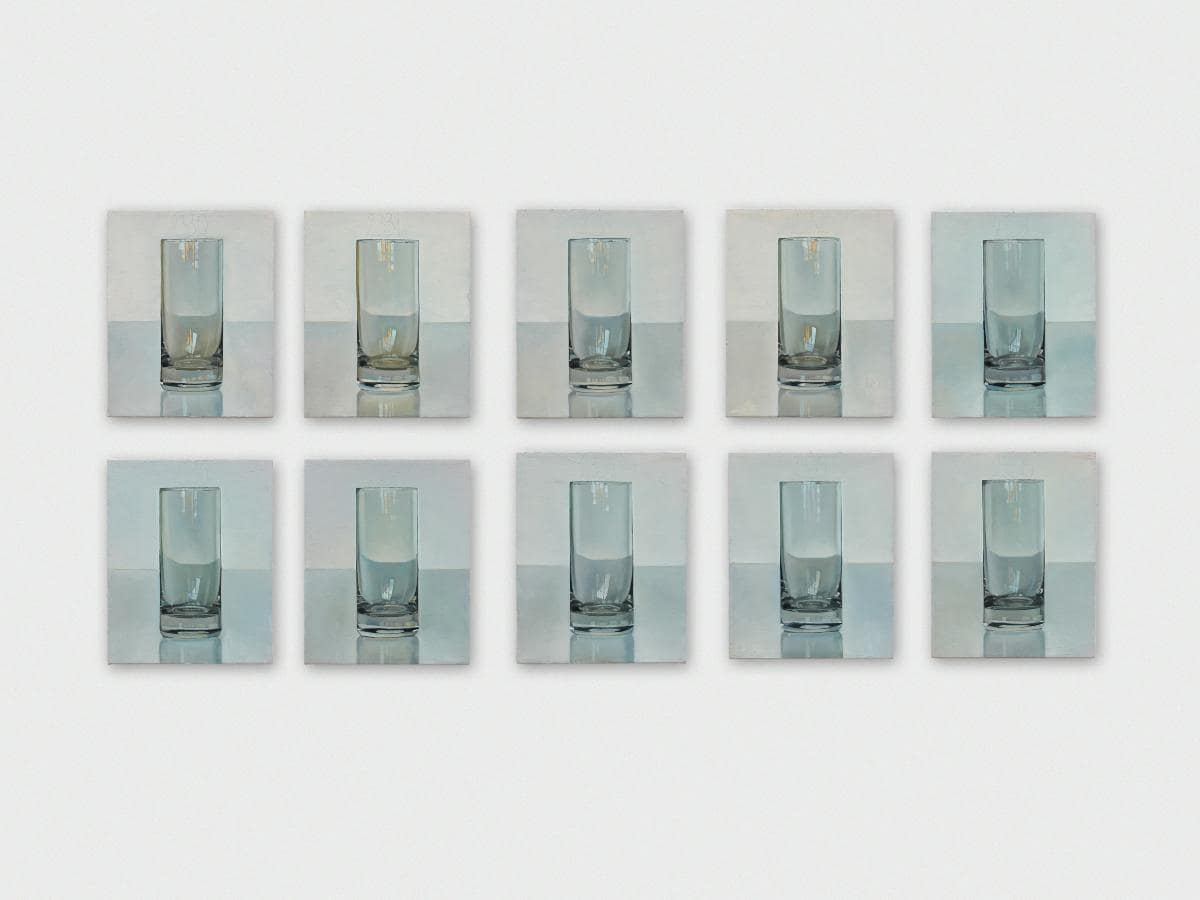
Dreher painted this glass 5,000 times between 1974 and 2014 – 2,500 times by day, and 2,500 times by night. He had only intended to paint the subject a handful of times, but realised the meditative qualities of the repeated task. He stated that he would stop ‘when the motivation stopped.’ Pictured here are the works exhibited at Musée d’Art Moderne et Contemporain, Geneva.
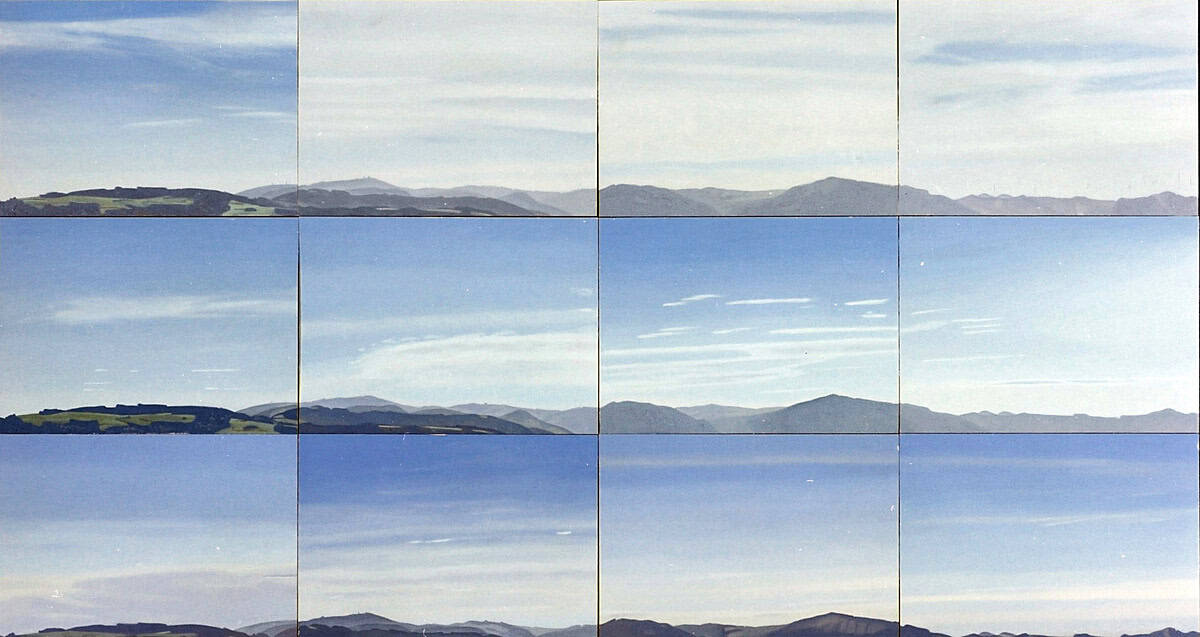
Besides still lives, landscape was also a chosen subject for the German artist. In ‘Schöne Tage im Hochschwarzwald’, he remained committed to repetition, painting the same vista several times, with only the floating clouds suggesting temporality.
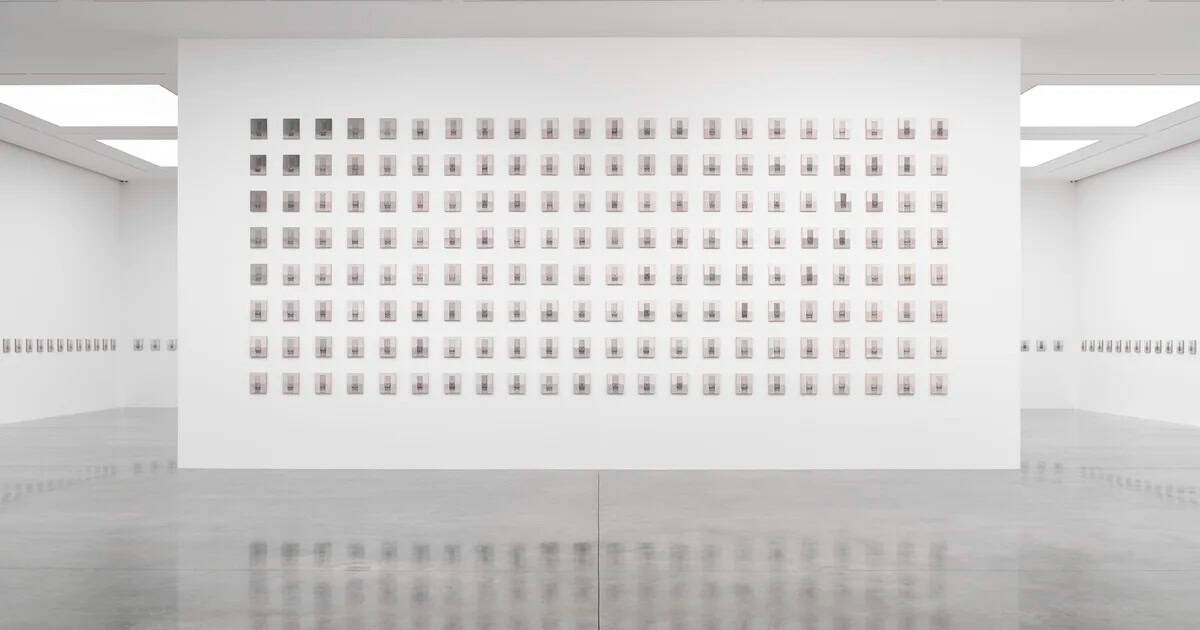
‘Tag Um Tag Guter Tag’ makes repetition its primary subject. No two paintings are, however, the same; every painting occupies a different space and represents a different moment in time. What Dreher creates through this repetition is akin to composer Ludwig Beethoven’s use of repetition in his symphonies. Subtle, slowly moving harmonic shifts allow the listener to ‘re-enter’ and re-experience each repeated harmony, just as Dreher invites us to revisit the glass, to see it anew each time, over and over.
B. Germany1932-2020
Biography
‘In my pictures I underline the act of seeing,’ said Peter Dreher. His earliest works display a preoccupation with vision and the meditative aspects of sight; geometric forms glow against gray backgrounds, floating in empty space. The artist, however, sought to return to realistic figuration, and soon began painting with vivid accuracy. He took as his subject immediately recognisable subjects, such as a glass, portraits, or landscapes. His goal was to return to an ultimate simplicity within his art. Tag Um Tag Guter Tag is an expression of an almost religious devotion both to painting and to seeing, and forms a project that spanned 40 years. Dreher’s choice of subject, he said in an interview, was to portray something so simple it was almost ‘invisible.’
New Objectivity remained, for Dreher, the preferred mode for artistic production. As well as this, he was also deeply moved by Pop Art and the work of Andy Warhol, Jasper Johns, and others, which he first encountered in 1964. During the 1970s and thereafter, Dreher became an important part of the German post-war movement in art. As well as a painter, Dreher was an academic, and became professor at the State Academy of Fine Arts Karlsruhe in 1968. Numbered among his pupils was one Anselm Kiefer, to whom Dreher was a great inspiration.
Dreher was born in Mannheim, Germany, in 1932. He was educated at the State Academy of Fine Arts Karlsruhe, where he later became a professor. The painter’s first solo exhibition was at the Städtische Kunsthalle Mannheim, Mannheim, Germany, in 1954, following which he enjoyed numerous international exhibitions, which include: Museum für Neue Kunst, Freiburg (2012, 2022); Staatliche Kunsthalle Baden–Baden (1977, 2002); Museum Kunstpalast, Düsseldorf (1982, 2008); Kunsthalle Würth (2021); Kunsthalle der Hypo Kulturstiftung, Munich (2010); Kunsthalle Nürnberg, Nürnberg (2022); Kunstmuseum Bonn, Bonn (2016); Museum Folkwang, Essen (1974); Von der Heydt Museum, Wuppertal (1982); Kunsthalle Emden/Kunsthal Rotterdam (2010); Musée d’Art moderne et Contemporain, Geneva (2011); Contemporary Jewish Museum, San Francisco (2015). Dreher died in 2020.